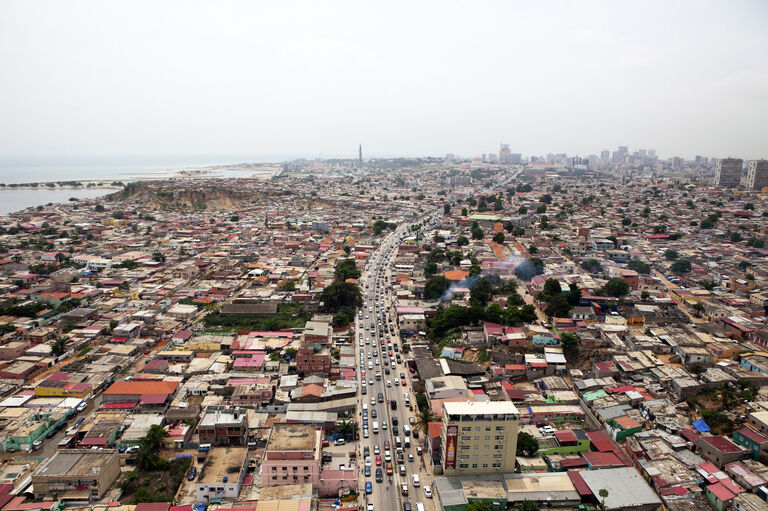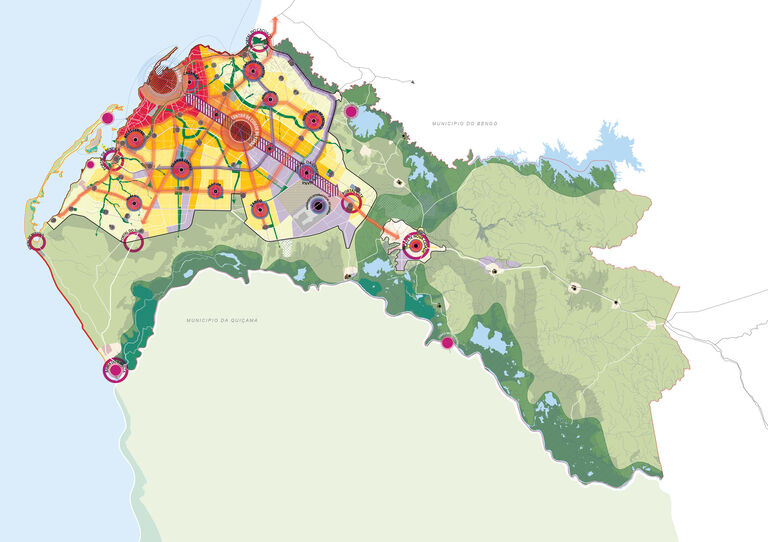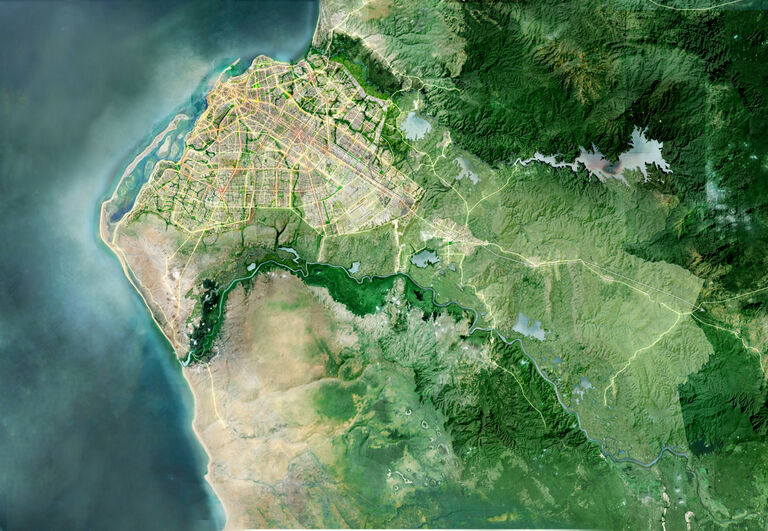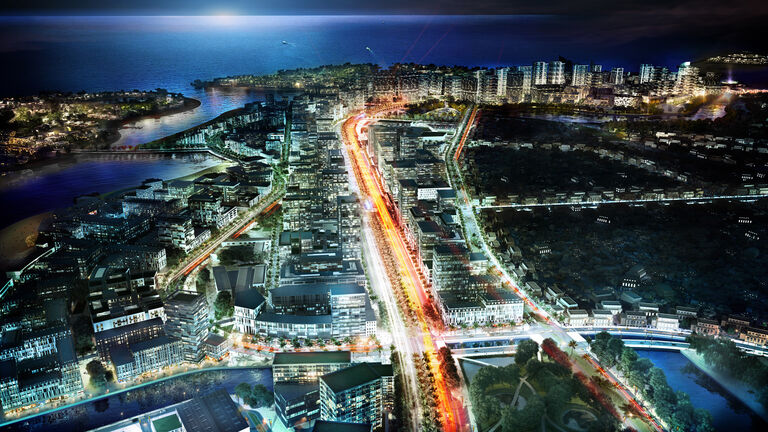Located on the western coast of southern Africa, Luanda is the capital city of Angola. The country has a landmass of over 1.2M km², more than France, Germany and the UK combined, largely covered with open savannah forest and dispersed settlements. Luanda is Angola’s largest city, home to 27% of its population, a figure that is set to rise significantly by 2030.
The city’s geography, socio-economic conditions, morphology, transport, infrastructure and environmental context have been analysed, and complex development scenarios tested, leading to the preparation of a sensitive and sustainable long-term urban renewal and growth plan.
Luanda is a city originally built for 500,000 people, now home to more than six million residents.



